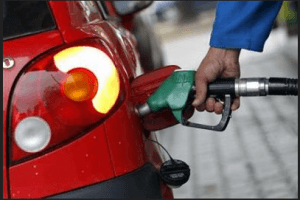You pay so much for fuel in Ghana because 40% of price is taxes
 Fuel prices have been on the rise since April 2021, leading to persistent agitations among industry players and transport operators in the country.
Fuel prices have been on the rise since April 2021, leading to persistent agitations among industry players and transport operators in the country.
Currently, a litre of petrol and diesel is selling at ¢6.90 at the various fuel stations.
The government has indicated that because petroleum prices in Ghana are deregulated, changes in prices in petroleum products on the world market have a direct impact on prices at the pumps.
However, several variables determine the final price build-up, some of which are beyond the control of the regulator (National Petroleum Authority), importers, and Oil Marketing Companies (OMCs).
Below are the major variables that inform fuel pricing in the country:
World market price
Currently, a chunk of all petroleum products in the country are imported. The malfunctioning of the Tema Oil Refinery, which was intended to boost local capacity, has intensified the country’s dependency on the international market.
As of November 19, 2021, the price of West Texas Intermediate (WTI) crude oil stood at $75.97 per barrel.
In this regard, all the cost that goes into shipping, landing, and discharging of the imported product and all other costs incurred by the importer are added to the world price before it is sold to the OMCs locally.
Both the importer and the OMCs will also add their margins to make some profit.
Cedi depreciation
Because the fuel is imported, the exchange rate plays a major role in the price build-up.
The importers purchase the product in dollars, and thus, the performance of the cedi against the dollar informs how much cedis the importers would need to purchase a certain quantity.
This invariably has a bearing on how much cedis the local OMCs would need to purchase the product from the importer – and that also informs how much the fuel would be sold at the pumps.
For instance, if the OMCs buy a litre of fuel at $1, the same quantity of fuel would be sold for ¢5.90, under the current exchange rate.
Taxes and levies
Currently, the government has imposed 12 different taxes and levies on petroleum products, which also determine the price of fuel in the country.
An assessment of the current price build-up indicates that for every litre of petrol now sold at ¢6.9, there was a tax component of about ¢2.70, constituting about 40 per cent of the total price build-up.
The taxes and levies include Energy Debt Recovery Levy, 49p; Road Fund Levy, 48p, Energy Fund Levy, 1p, Price Stabilisation and Recovery Levy 14p; Sanitation and Pollution Levy, 10p; Energy Sector Recovery Levy, 20p; Special Petroleum Tax, 46p, and Primary Distribution Margin, 11p.
The rest are BOST Margin, 9p; Fuel Marking Margin, 5p; Marketers’ Margin 46p, and Dealers (Retailers/Operators) Margin, 30p.
The government has, however, suspended the Price Stabilisation and Recovery Levy (PSRL) on petroleum products for two months, which took effect on November 1, 2021.
Meanwhile, the Institute for Energy Security (IES) says per its assessment, the suspension of the levy is insignificant, given that the accumulated increment in prices is more than the 14p that the levy catered for.
The IES has projected that the price of fuel will hit ¢7.0 per litre by the end of the year.
The Association of Oil Marketing Companies says its members have been compelled to drop their margins, in the wake of the increment in fuel prices.
The Association said if OMCs were to apply their full margins to cover the cost of operations and profit, a litre of petrol would have been sold for ¢7.21 at the pumps.
By Edward Acquah
Source: GNA
